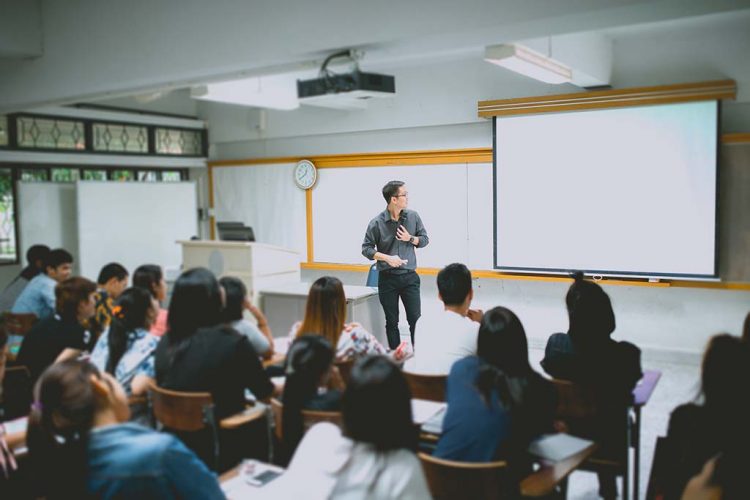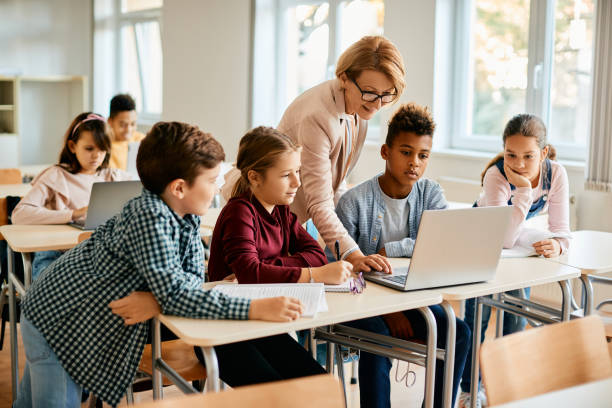Accelerate Learning with Primary Science Tuition Singapore for Young Minds
Wiki Article
Checking Out the Different Teaching Approaches in Key Scientific Research Education Today
Inquiry-based understanding, hands-on experiments, and the integration of innovation are redefining just how teachers involve young minds. Furthermore, collective approaches and set apart instruction are being used to provide to the diverse needs of students, improving both engagement and understanding.Inquiry-Based Learning
Inquiry-Based Knowing (IBL) is an instructional strategy that urges students to discover scientific ideas via doubting, examination, and hands-on trial and error. This method highlights the duty of trainees as energetic individuals in their knowing, advertising important reasoning and analytic skills. By engaging with real-world concerns, trainees come to be determined and curious, which boosts their understanding of clinical principles.In IBL, instructors work as facilitators, assisting pupils as they browse their queries as opposed to supplying information straight. This student-centered approach permits for distinction, suiting numerous learning designs and paces. Trainees develop skills in formulating hypotheses, making experiments, and analyzing information, which are important for scientific proficiency.
Additionally, IBL cultivates partnership among pupils, urging them to share findings and concepts. This cumulative inquiry promotes social skills and a feeling of community within the classroom. Furthermore, the process of inquiry motivates strength, as trainees discover to welcome failure as a tipping rock toward understanding.
Hands-On Experiments
Hands-on experiments are an essential component of effective science education and learning, enhancing the concepts of inquiry-based learning. These experiments allow pupils to engage directly with scientific concepts, fostering a much deeper understanding via experiential understanding. By controling materials and observing end results, young students can understand abstract concepts in tangible methods.Such tasks advertise crucial thinking and analytical skills, as trainees hypothesize outcomes, conduct experiments, and examine results. This procedure motivates them to ask questions, refine their understanding, and develop a clinical state of mind. Hands-on experiments can be customized to diverse understanding designs, ensuring that all trainees have the chance to engage meaningfully with the web content.
In addition, hands-on experiments usually motivate collaboration amongst peers, promoting synergy and communication abilities. Operating in groups allows pupils to share concepts, talk about findings, and pick up from each other, which improves their general instructional experience.
Including hands-on experiments right into the main science educational program not only improves the finding out atmosphere however also cultivates a lifelong interest in scientific research. By actively taking part in their education and learning, students are more probable to establish an enthusiasm for scientific inquiry that extends past the class.
Modern Technology Assimilation
Integrating technology right into key scientific research education has ended up being significantly important in fostering pupil interaction and boosting finding out results. Using digital devices, such as interactive simulations, online laboratories, and instructional software application, supplies pupils with possibilities to discover clinical concepts in ingenious methods. These resources help with a deeper understanding of complicated topics by permitting learners to envision and control variables that would certainly be impractical in a standard classroom setting.In addition, technology assimilation urges customized finding out experiences. Students can progress at their own pace, reviewing challenging ideas through multimedia sources, which deal with different understanding styles. This adaptability not just supports private development however additionally grows a feeling reference of freedom in learners.
Furthermore, modern technology works as a bridge to real-world scientific research, connecting students with current study and professional payments. Access to on the internet databases and scientific journals broadens students' viewpoints on clinical questions and fosters essential assuming abilities.
Collaborative Knowing
Joint understanding plays an important function in primary science education and learning by cultivating team effort and interaction abilities among trainees. This method encourages students to collaborate, share understanding, and take part in analytical, which boosts their understanding of clinical principles. By getting involved in group activities, students discover to express their ideas, listen to varied perspectives, and discuss options, all of which are important abilities in both real-world and academic contexts.
Research study indicates that joint learning can result in enhanced inspiration and interaction in science topics, as trainees locate enjoyment in shared experiences (primary science blog here tuition Singapore). Furthermore, this technique prepares students for future collaborative ventures, equipping them with the skills essential for efficient teamwork in higher education and professional environments. Ultimately, embracing joint knowing in main science education can significantly enhance the learning experience and advertise a much deeper understanding of clinical questions
Distinguished Direction

Differentiated direction can manifest in different ways, such as differing the web content, processes, or products of learning. Instructors may utilize tiered tasks that provide differing degrees of complexity, permitting students to function at their particular preparedness degrees. Additionally, versatile grouping strategies can assist in partnership amongst trainees with different capabilities, promoting peer knowing.
Evaluation plays a critical duty in this approach, as it educates direction and helps instructors comprehend each pupil's special requirements. Formative evaluations, such as observations and tests, can guide instructors in changing their techniques to boost finding out end results. primary science tuition Singapore. Eventually, by carrying out distinguished direction in main science education, instructors can grow a much more fair and efficient understanding atmosphere, equipping all students to reach their complete possibility in comprehending clinical phenomena
Conclusion
In summary, the diverse teaching methods in primary science education and her latest blog learning, consisting of inquiry-based learning, hands-on experiments, technology combination, collaborative knowing, and distinguished direction, jointly add to a more reliable understanding atmosphere. These methods advertise important thinking, problem-solving abilities, and a much deeper comprehension of scientific principles. By applying these methods, educators can produce engaging and supportive class that deal with the varied demands of trainees, ultimately fostering a lifelong passion in science and boosting academic accomplishment.Inquiry-Based Learning (IBL) is a pedagogical technique that encourages trainees to explore clinical ideas via questioning, investigation, and hands-on trial and error.Joint learning plays an important duty in main scientific research education by promoting synergy and communication skills among students.Research study suggests that joint knowing can lead to boosted motivation and interaction in scientific research topics, as students discover enjoyment in common experiences.In promoting a comprehensive learning setting, separated instruction emerges as an essential strategy to accommodate the varied demands and capacities of pupils in main science education. Inevitably, by carrying out distinguished guideline in main scientific research education and learning, teachers can grow a more reliable and fair learning environment, empowering all pupils to reach their complete potential in understanding clinical sensations.
Report this wiki page